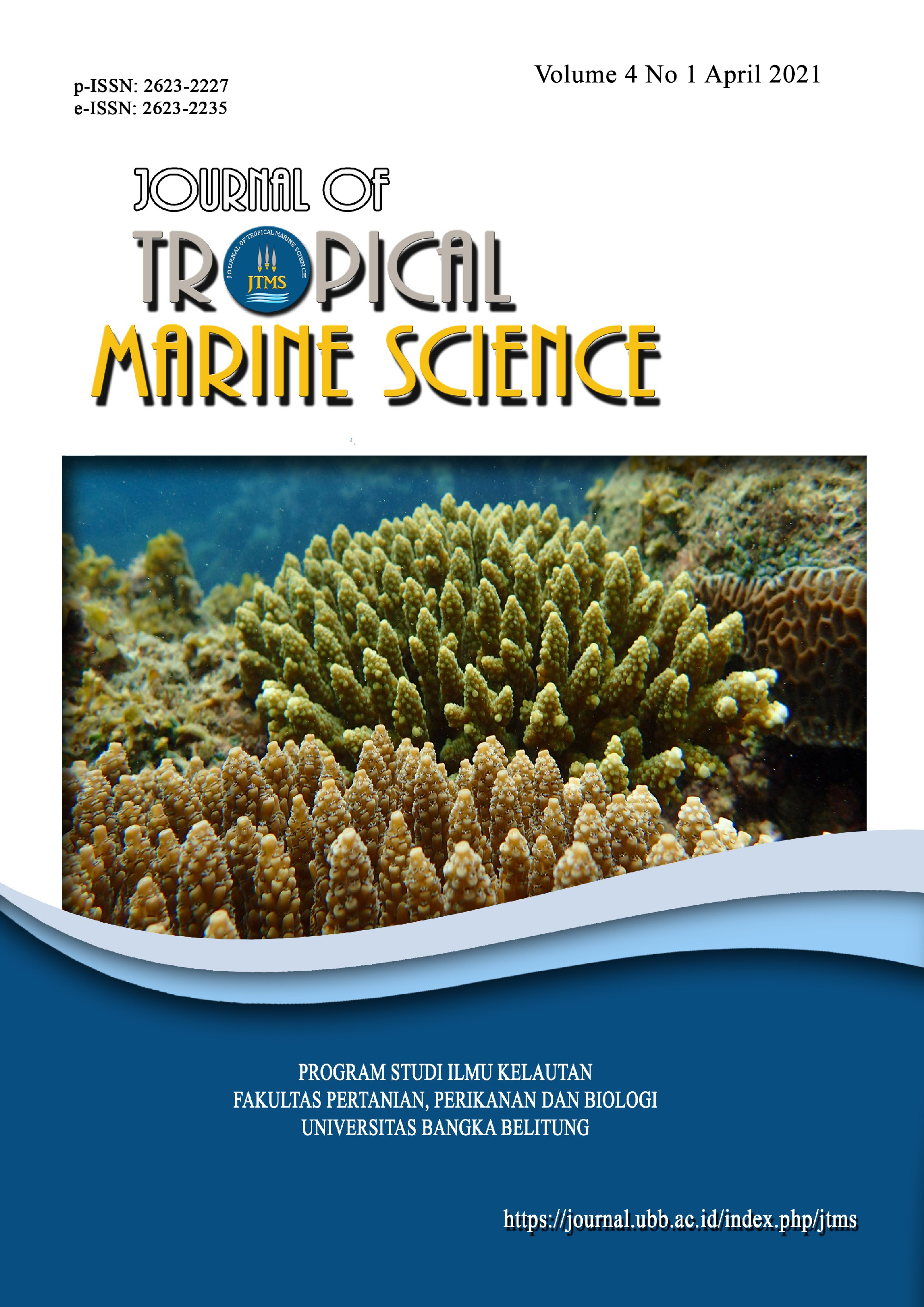Analysis of Food Habits of Dog Conch (Laevistrombus Turturella) In South Bangka
DOI:
https://doi.org/10.33019/jour.trop.mar.sci.v4i1.1982Keywords:
Eating habits, Dog Conch, Tanjung Ru and KubuAbstract
This study aims to analyze food habits, stomach fullness indexand the influence of physico-chemical factors on the life of the dog conch in South Bangka.This research was conducted from February to June 2020.Sampling of dog conch was carried out in the waters of Tanjung Ru and Kubu, the collection was done by using purposive sampling method.The results showed that 3 types of food were found in the stomach of the dog conch, namely Detritus, Phytoplankton and Zooplankton.The results of the Food Prepoderance Index (li) analysis of the dog conch at location I (Tanjung Ru) which are the main food for dog conch, namely Detritus (81.77%), complementary foods, namely Phytoplankton (18.15%), and additional foods, namely Zooplankton (0.08%).In location II (Kubu), the main food for dog conch is Detritus (89.05%) and complementary food is Phytoplankton (10.95%).The fullness index of the dog conch in the two locations was different, in Tanjung Ru (20%) and in Kubu (17.56%).Based on the analysis of the physico-chemical parameters of the waters, Tanjung Ru is a good location to be used as a place for dog conch cultivation.because this location is still natural, and there are seagrass plants that can be used as habitat for dog conch.Downloads
Download data is not yet available.
Downloads
Published
2021-05-04
Issue
Section
Articles



